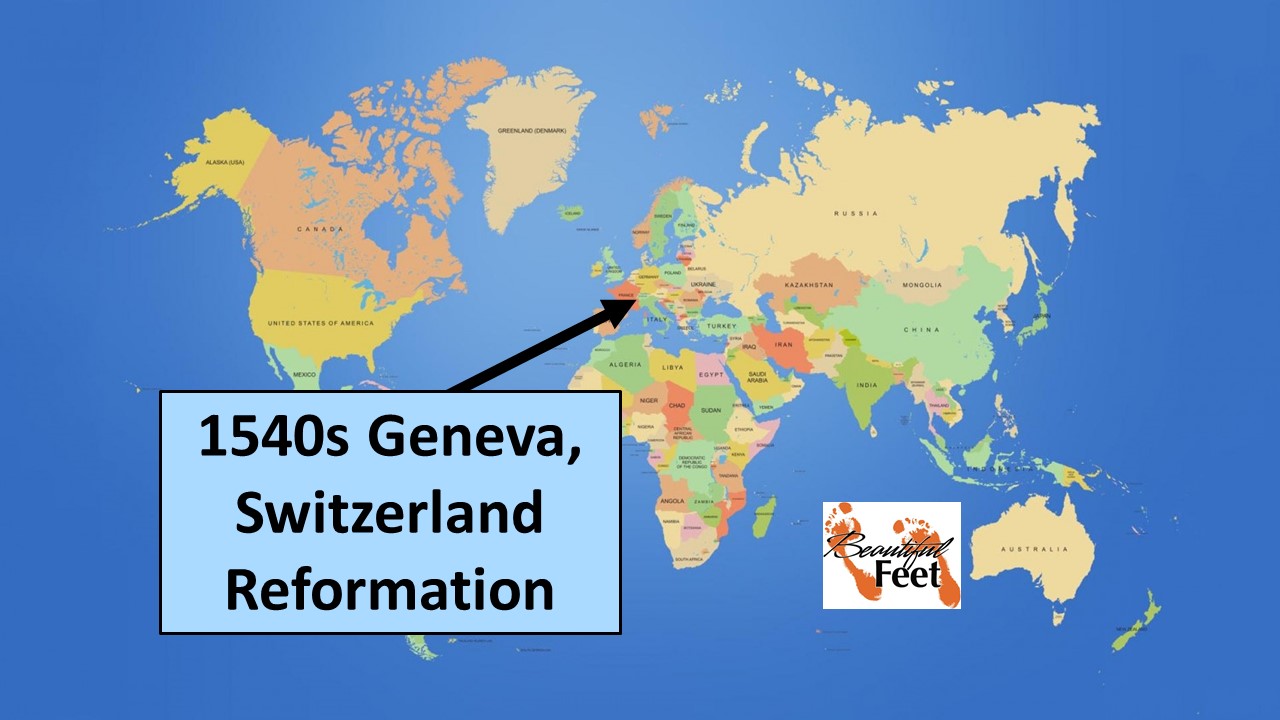
Prerequisite Reading
We strongly recommend reading of our post “The Need for the Protestant Reformation” prior to reading this or any of the other Reformation posts we have written.
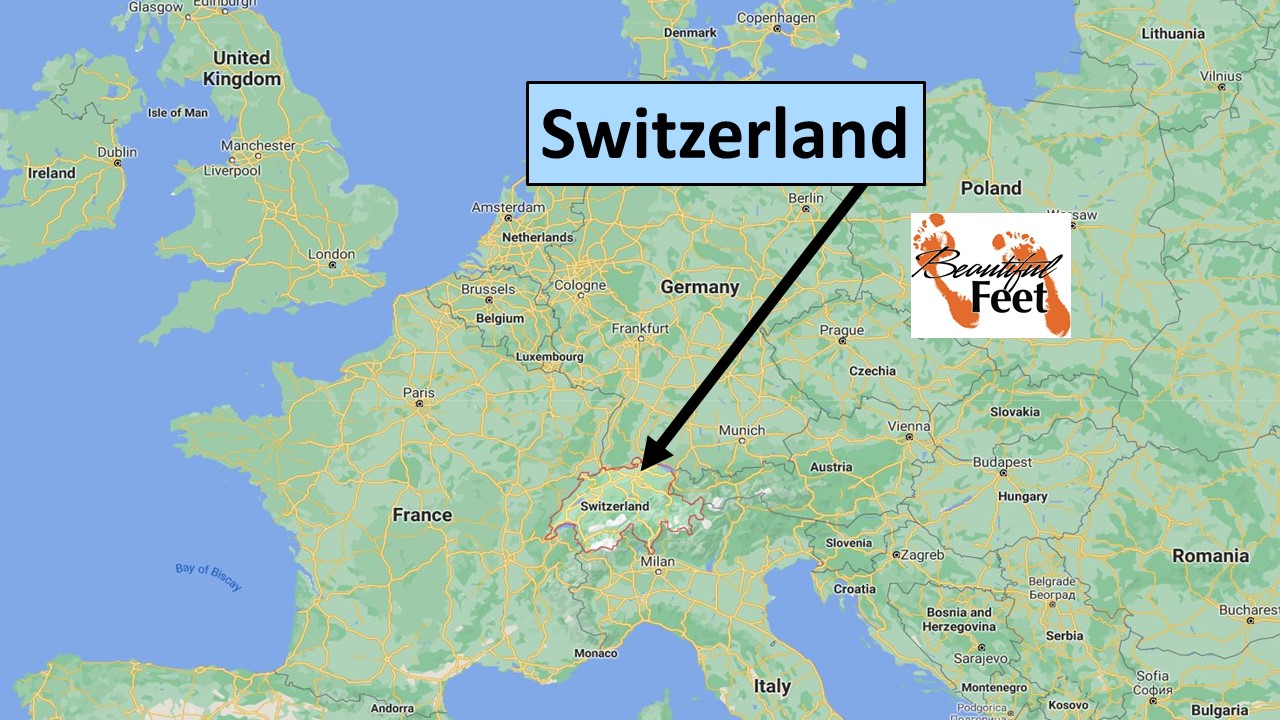
Introduction
John Calvin was a French theologian, pastor, and reformer during the Protestant Reformation. He is responsible for the system of Christian theology today referred to as Calvinism or Reformed.
Trained as a lawyer, he left the Catholic Church around 1530 after anti-Protestant violence erupted in France.
In 1536 he published his first edition of his Institutes of the Christian Religion, and during that same year, the Frenchman William Farel encouraged him to join the Reformation effort in Geneva, Switzerland.
Geneva wasn’t ready to fully embrace these men’s strict ideas, so they were expelled from the city. Calvin when to Strasbourg, France, where he became a minister in a church of French refugees.
In 1541, the government of Geneva invited Calvin to return to lead their Reform efforts. He helped them install new forms of church and civic government, which became a model that Protestants throughout Europe admired.
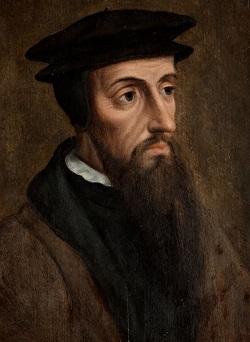
John Calvin
About the Protestant Reformer, John Calvin
► Born July 10, 1509 in Noyon, France
► At age 12, he became a clerk for the bishop, and received the tonsure (haircut showing submission to the Catholic Church)
► Schools attended and what he studied:
.• Collège de la Marche, Paris—Latin
.• Collège de Montaigu, Paris–Philosophy
.• Université d’Orléans, Orléans, France—law
.• Université de Bourges, Bourges, France—Greek
Converted from Catholicism to Protestantism
Calvin’s conversion was gradual. Most say it occurred between 1529-1533.
Fled from Paris
Severe persecution against Protestants had been occurring in France, beginning with the Waldensians in the late 1100s. As time progressed, the courage and boldness of reformers emerged, and in October 1533, Paris was experiencing increased tensions between the reformers and the Catholic faculty members at the University of Paris. One reformer, Nicolas Cop, who was the rector of the university, preached a sermon about the need for reform in the Catholic Church. With the faculty denouncing that sermon as heretical, Cop fled to Basel, Switzerland.
Affair of the Placards
During the evening hours of 17-18 October, 1534, a group of reformers posted anti-Catholic placards throughout the cities of Paris, Blois, Rouen, Tours, and Orléans, with one of these placards making its way to the bedroom door of King Francis I, in the Chateau d’Amboise. The title on the placards was:
Genuine articles on the horrific, great and unbearable abuses of the papal mass, invented directly contrary to the Holy Supper of our Lord, sole mediator and sole savior Jesus Christ.
Because it was highly critical of the Roman Catholic mass, the Catholic community became enraged, and the previously tolerant king also turned against the Protestants, knowing that someone had even broken through his security and made their way to his bedroom door.
Severe persecution broke out and some were burned at the stake. Prior to this, Calvin had been in hiding in a couple of towns, and after the Placard Affair, he was forced to flee France and ended up in Basel with Nicolas Cop.
Institutes
In March 1536, Calvin published his six-chapter version of Institutes of the Christian Religion. This was the document for which he is most renowned. It is a doctrinal statement of his and other reformers’, as well as an elementary instruction book for anyone interested in the Christian faith. He updated this book throughout his life, with the final version being completed in 1559 with eighty chapters.
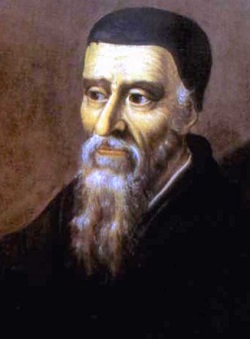
William Farel
First Stay in Geneva, Switzerland
In August 1536, while on his way to Strasbourg, France, Calvin spent the night in Geneva. It was then that William Farel, an impetuous reformer, talked him into staying and helping him with establishing a reformed (Protestant) government in Geneva.
As Savonarola’s desire was to turn Florence, Italy, into a theocratically run city, Farel and Calvin had the same plans for Geneva. On January 16, 1537, Farel and Calvin presented their Articles on the Organization of the Church and its Worship at Geneva to the city council. This was for them to approve and implement in all churches in the city, and they immediately accepted it.
By November 26, 1537, the two men were at odds with the city council. The strict enforcement of their religious rules, requiring attendance at public worship as well as punishments measured out to nonconformists, brought a group called the Libertines to the forefront. The Libertines gained the upper hand on the city council, which led to Farel and Calvin being expelled from Geneva.
Calvin in Strasbourg (1538-1541)
After leaving Geneva, Calvin was invited by Martin Bucer to Strasbourg, France. While there he married, ministered in several different churches, and revised and expanded his Institutes of the Christian Religion.
Calvin’s Return to Geneva
During Calvin’s absence from Geneva, the political climate had changed, and with the Catholic Church taking steps to reassert control over the city, the Geneva city council wrote to Calvin, asking him to come and help them maintain and enhance their Protestant position.
Calvin was at first reluctant to return, but after negotiations he arrived back on September 13, 1541, having been granted an official escort.
Opposition in Geneva
Around 1546, the Libertines, being of the elite and wealthy in Geneva, began to raise their heads again. This group claimed they believed in “grace,” and that should free them from both ecclesiastical and civil law.
By 1547, it was suspected that a plot was developing, involving a majority of Geneva’s civil magistrates. Their objective was to conduct a coup against the city government and massacre the French (Calvin being one of them). An unsigned threatening letter was found on Calvin’s pulpit on June 27, 1547.
Following an investigation into the plot and the letter, a man was arrested with incriminating evidence found in his house. While being tortured, he confessed to several crimes, including writing the letter left on the pulpit which threatened church leaders. The guilty man was condemned to death and subsequently beheaded.
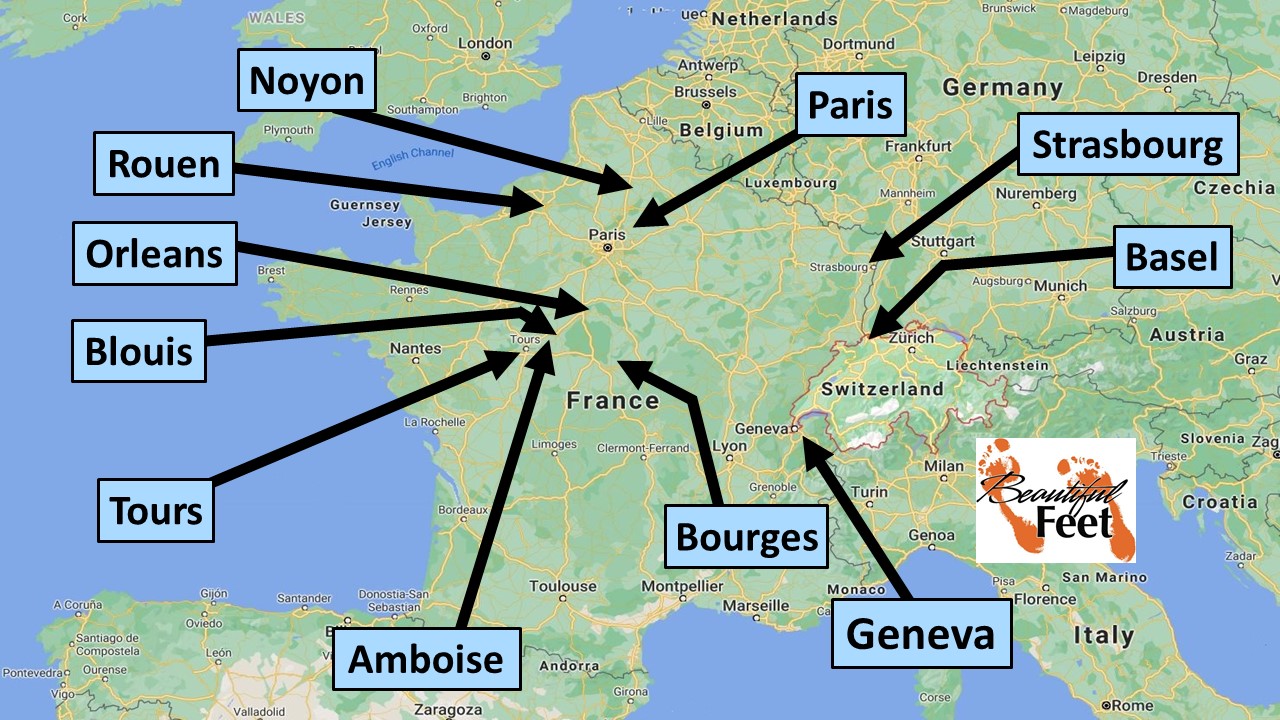
Locations mentioned in this story
Last Years (1555-1564)
Calvin’s latter years were spent attempting to bring doctrinal uniformity to the protestant reformation but he was unsuccessful. Regardless of the efforts of Calvin and others, Protestants have continually divided themselves into many thousands of different denominations through the centuries.
Results of the Reformation Effort in Geneva
As Europe was going through tremendous political and religious upheaval, there was a ray of light for the Protestant Church, and it was emerging from Geneva. Prior to the 1530s, Geneva was:
► Torn by factions
► Degraded by superstitions
► Totally ignorant of Christian truth
► Sunk in the worship of relics
► Immersed in false beliefs in miracles supposedly performed by saints
► Given over to licentiousness
► Known for fickleness and deceit
► Under the control of the Catholic Church’s authority
The condition of Geneva following Calvin’s reformation work:
► There was peace and good government.
► Law-abiding citizens were a model for all of Europe.
► Geneva became one of the greatest intellectual centers of Europe.
► Sinfulness was absent on the streets.
► God was worshipped in thousands of homes.
► In public affairs of the city God’s will was sought and obeyed.
► The Word of God was the only rule of faith and practice.
► The city was a symbol of freedom and protestants from throughout Europe came there for refuge.
► Schools and seminaries were started.
► The renowned atheist Voltaire, when he fled from France, went to Geneva to find safety.
► The Scottish reformer John Knox, during his exile from England, found refuge in Geneva and had this to say about that town:
I neither fear nor shame to say, that this is the most perfect school of Christ that ever was since the days of the Apostles. In other places I confess Christ to be truly preached; but manners and religion to be so sincerely reformed I have not yet seen in any place besides.
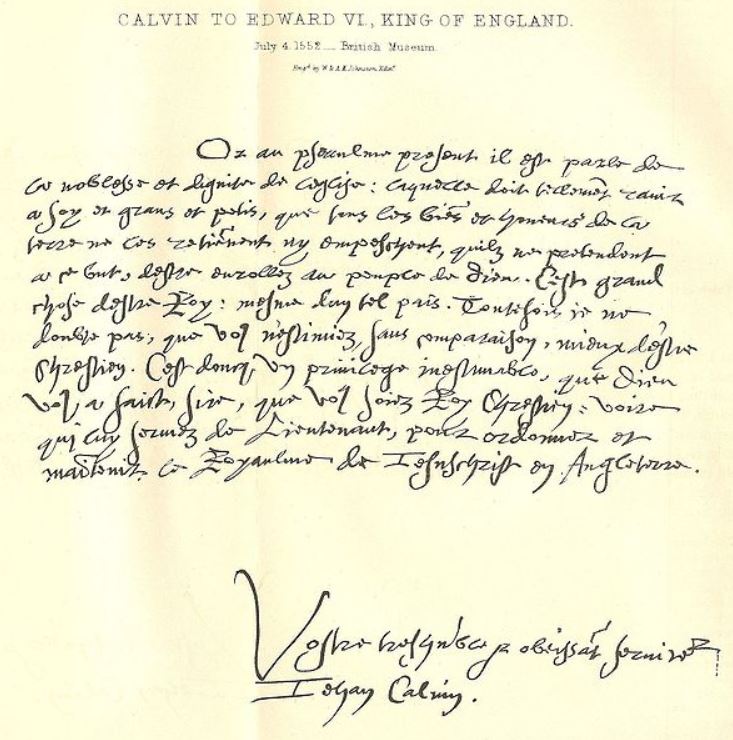
John Calvin’s letter to Edward VI, King of England: July 4, 1552
Calvin’s English, Scottish, and Global Influence
During the tumultuous English Reformation, with many Protestants being exiled or executed during the reign of the Catholic Mary Tudor (Bloody Mary), exiles found shelter in Geneva, starting in 1555 (Marian Exiles).
The city of Geneva allowed the Scottish reformer John Knox and William Whittingham to form their own English-speaking church based on Calvin’s ideas of doctrine and church structure. These ideas were eventually carried back to England and Scotland, giving rise to the spread of Presbyterianism, and Calvinism, which led to the Puritans and their dispersion into the American colonies.
His Death
Calvin died on May 27, 1564, aged 54. At first his body lay in state, but with so many people coming to see it, reformers feared they would be accused of fostering a new saint’s cult. On the following day, he was buried in an unmarked grave in the Cemetery of Kings (Cimetière des Rois) in Geneva. The exact location of the grave is unknown. A stone was added in the 19th century to mark a grave traditionally thought to be Calvin’s.
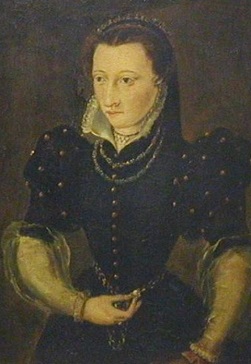
Idelette Calvin
Wife of John Calvin
Descendants
In 1540, Calvin married Idelette de Bure, a widow with two children. None of Calvin’s own children survived infancy. His wife died on March 19, 1549. Of his wife, Calvin said:
I have been bereaved of the best friend of my life, of one who, if it has been so ordained, would willingly have shared not only my poverty but also my death. During her life she was the faithful helper of my ministry. From her I never experienced the slightest hindrance. She was never troublesome to me throughout the entire course of her illness; she was more anxious about her children than about herself.
Sources
► Four Reformers: Luther, Melanchthon, Calvin, Zwingli by Kurt Aland
► Institutes of the Christian Religion Vol. I by John Calvin
► Institutes of the Christian Religion Vol. II by John Calvin
► Institutes of the Christian Religion Vol. III by John Calvin
► John Calvin by Wikipedia
► The Life of John Calvin by Theodore Beza
► The Ten Greatest Revivals Ever by Elmer Towns
► Revivals Their Laws and Leaders by James Burns
Videos
► Calvin and Calvinism by Ryan Reeves
► John Calvin: Young Life by Ryan Reeves
► Calvin the Humanist by Ryan Reeves
► Calvin and the French Reform by Ryan Reeves
► John Calvin: Conversion and Exile by Ryan Reeves
► Calvin’s Return to Geneva by Ryan Reeves
► Organization of Geneva by Ryan Reeves
► Calvin, England, and Scotland by Ryan Reeves
► Calvin and Servetus by Ryan Reeves
► Calvin’s Final Years by Ryan Reeves
► John Calvin and the Reformation by Discerning History
Return to List of Revival Stories
Chet & Phyllis Swearingen
(260) 920-8248
romans1015@outlook.com
Beautiful Feet
P.O. Box 915
Auburn, IN 46706

